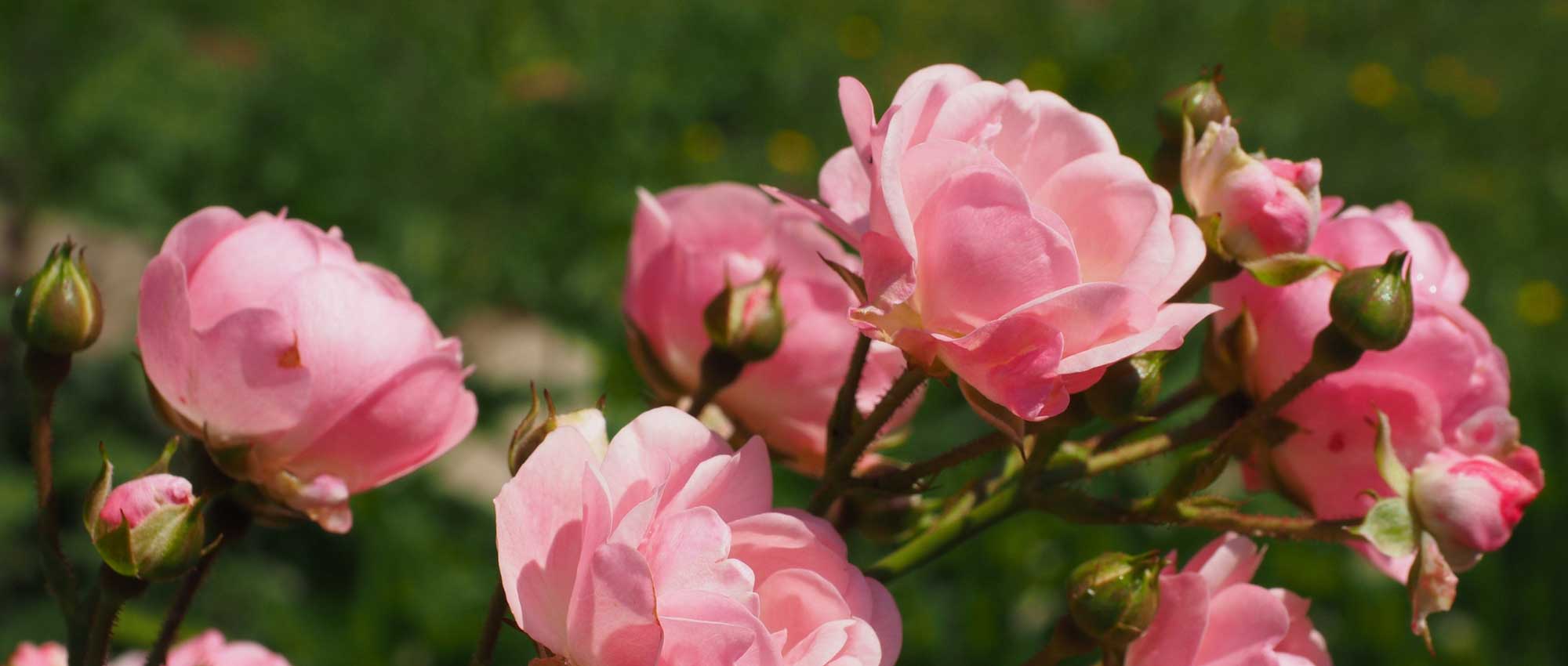

Rosa Coral Drift - Groundcover Rose
Rosa Coral Drift - Groundcover Rose
Rosa 'Meidrifora' CORAL DRIFT®
Groundcover Rose
Special offer!
Receive a €20 voucher for any order over €90 (excluding delivery costs, credit notes, and plastic-free options)!
1- Add your favorite plants to your cart.
2- Once you have reached €90, confirm your order (you can even choose the delivery date!).
3- As soon as your order is shipped, you will receive an email containing your voucher code, valid for 3 months (90 days).
Your voucher is unique and can only be used once, for any order with a minimum value of €20, excluding delivery costs.
Can be combined with other current offers, non-divisible and non-refundable.
We guarantee the quality of our plants for a full growing cycle, and will replace at our expense any plant that fails to recover under normal climatic and planting conditions.

Description
The Coral Drift® Groundcover Rose is an ultra-compact ground cover rose, prized for its continuous flowering and ease of cultivation. It belongs to the Drift® series by Meilland Richardier, a renowned range known for its floriferous and hardy varieties. This dense, ramified small bush produces an abundance of semi-double flowers of 6 cm in diameter in a vivid coral-pink with a slight orange hue, which beautifully contrast with its glossy green foliage. Its low, spreading habit makes it an excellent choice for borders, rockeries, slopes, and containers, where it adds a splash of vibrant colour from spring until the first frosts.
Belonging to the Rosaceae family, the Coral Drift® 'Meidrifora' Rose is a modern variety developed by Meilland in 2009 to combine compact growth with abundant flowering. It forms a rounded, trailing bush reaching 40 to 50 cm in height and 30 to 40 cm in width, making it the smallest of the Drift® roses. Its short, highly ramified stems enable it to rapidly become covered in flowers, creating a lush, dense effect in no time. The rich, coral-pink blooms with a slight orange tint open into wide cups, revealing golden stamens that attract pollinating insects. This flowering begins in spring and renews in successive waves until the first frosts, almost entirely covering the foliage. Unlike other groundcover roses, the Coral Drift® does not produce long trailing stems but remains well-structured, with a uniform habit and dense foliage. Its fine, bright, green deciduous leaves stay in perfect condition throughout the season thanks to its natural disease resistance, particularly against powdery mildew and black spot. This hardiness makes it an ideal choice for gardens without the need for any chemical treatments. Very hardy, it can withstand temperatures down to -20°C, enabling it to thrive in many regions including those with harsh winters.
Very easy to grow, the Coral Drift® thrives in any well-drained soil, whether light, sandy, ordinary, slightly alkaline, or humus-bearing. It prefers a sunny position but also tolerates light shade in summer. Light pruning in late winter during the first two years will encourage flowering and maintain its balanced habit. Thanks to its low-maintenance nature, it is perfect for gardeners seeking a decorative plant without fuss. With its luminous coral colour, it will easily fit in many types of landscape designs. In beds, it pairs beautifully with hardy geraniums (‘Rozanne’, ‘Orion’), catmints, or perovskias, creating an elegant contrast. Along a hedge border, it adds a bright touch and can be planted alongside pastel shrub roses or small evergreen bushes like spindle trees or lavenders. In a more natural setting, it complements light grasses, spurges, or yarrows. In pots on a patio, it forms a small flowering dome, ideal for sunny balconies. Thanks to its controlled growth, it can also be used to line a pathway or stabilise a small slope, creating a trailing effect.
Plant habit
Flowering
Foliage
Botanical data
Rosa
'Meidrifora' CORAL DRIFT®
Rosaceae
Groundcover Rose
Rosa CORAL DRIFT
Cultivar or hybrid
Planting and care
To plant your Coral Drift rose, prepare the soil by working it to a depth of 25 cm, breaking up any clumps. At the bottom of the planting hole, add a base fertiliser such as dried blood or dehydrated horn. Place your plant after removing it from its pot, covering the top of the root ball with 3 cm of soil. Backfill and water thoroughly to eliminate any air pockets. During dry weather, water regularly for a few weeks to encourage root establishment. Don't forget to feed your rose with a special rose fertiliser to promote flowering.
Roses often develop spots or look unsightly by late summer, but this does not affect their growth. These spots are not harmful to the plant—it's a natural occurrence. Follow our expert advice to address this issue and read our article: Help! My Roses Have Spots
Planting period
Intended location
Care
Planting & care advice
This item has not been reviewed yet - be the first to leave a review about it.
Haven't found what you were looking for?
Hardiness is the lowest winter temperature a plant can endure without suffering serious damage or even dying. However, hardiness is affected by location (a sheltered area, such as a patio), protection (winter cover) and soil type (hardiness is improved by well-drained soil).

Photo Sharing Terms & Conditions
In order to encourage gardeners to interact and share their experiences, Promesse de fleurs offers various media enabling content to be uploaded onto its Site - in particular via the ‘Photo sharing’ module.
The User agrees to refrain from:
- Posting any content that is illegal, prejudicial, insulting, racist, inciteful to hatred, revisionist, contrary to public decency, that infringes on privacy or on the privacy rights of third parties, in particular the publicity rights of persons and goods, intellectual property rights, or the right to privacy.
- Submitting content on behalf of a third party;
- Impersonate the identity of a third party and/or publish any personal information about a third party;
In general, the User undertakes to refrain from any unethical behaviour.
All Content (in particular text, comments, files, images, photos, videos, creative works, etc.), which may be subject to property or intellectual property rights, image or other private rights, shall remain the property of the User, subject to the limited rights granted by the terms of the licence granted by Promesse de fleurs as stated below. Users are at liberty to publish or not to publish such Content on the Site, notably via the ‘Photo Sharing’ facility, and accept that this Content shall be made public and freely accessible, notably on the Internet.
Users further acknowledge, undertake to have ,and guarantee that they hold all necessary rights and permissions to publish such material on the Site, in particular with regard to the legislation in force pertaining to any privacy, property, intellectual property, image, or contractual rights, or rights of any other nature. By publishing such Content on the Site, Users acknowledge accepting full liability as publishers of the Content within the meaning of the law, and grant Promesse de fleurs, free of charge, an inclusive, worldwide licence for the said Content for the entire duration of its publication, including all reproduction, representation, up/downloading, displaying, performing, transmission, and storage rights.
Users also grant permission for their name to be linked to the Content and accept that this link may not always be made available.
By engaging in posting material, Users consent to their Content becoming automatically accessible on the Internet, in particular on other sites and/or blogs and/or web pages of the Promesse de fleurs site, including in particular social pages and the Promesse de fleurs catalogue.
Users may secure the removal of entrusted content free of charge by issuing a simple request via our contact form.
The flowering period indicated on our website applies to countries and regions located in USDA zone 8 (France, the United Kingdom, Ireland, the Netherlands, etc.)
It will vary according to where you live:
- In zones 9 to 10 (Italy, Spain, Greece, etc.), flowering will occur about 2 to 4 weeks earlier.
- In zones 6 to 7 (Germany, Poland, Slovenia, and lower mountainous regions), flowering will be delayed by 2 to 3 weeks.
- In zone 5 (Central Europe, Scandinavia), blooming will be delayed by 3 to 5 weeks.
In temperate climates, pruning of spring-flowering shrubs (forsythia, spireas, etc.) should be done just after flowering.
Pruning of summer-flowering shrubs (Indian Lilac, Perovskia, etc.) can be done in winter or spring.
In cold regions as well as with frost-sensitive plants, avoid pruning too early when severe frosts may still occur.
The planting period indicated on our website applies to countries and regions located in USDA zone 8 (France, United Kingdom, Ireland, Netherlands).
It will vary according to where you live:
- In Mediterranean zones (Marseille, Madrid, Milan, etc.), autumn and winter are the best planting periods.
- In continental zones (Strasbourg, Munich, Vienna, etc.), delay planting by 2 to 3 weeks in spring and bring it forward by 2 to 4 weeks in autumn.
- In mountainous regions (the Alps, Pyrenees, Carpathians, etc.), it is best to plant in late spring (May-June) or late summer (August-September).
The harvesting period indicated on our website applies to countries and regions in USDA zone 8 (France, England, Ireland, the Netherlands).
In colder areas (Scandinavia, Poland, Austria...) fruit and vegetable harvests are likely to be delayed by 3-4 weeks.
In warmer areas (Italy, Spain, Greece, etc.), harvesting will probably take place earlier, depending on weather conditions.
The sowing periods indicated on our website apply to countries and regions within USDA Zone 8 (France, UK, Ireland, Netherlands).
In colder areas (Scandinavia, Poland, Austria...), delay any outdoor sowing by 3-4 weeks, or sow under glass.
In warmer climes (Italy, Spain, Greece, etc.), bring outdoor sowing forward by a few weeks.








































